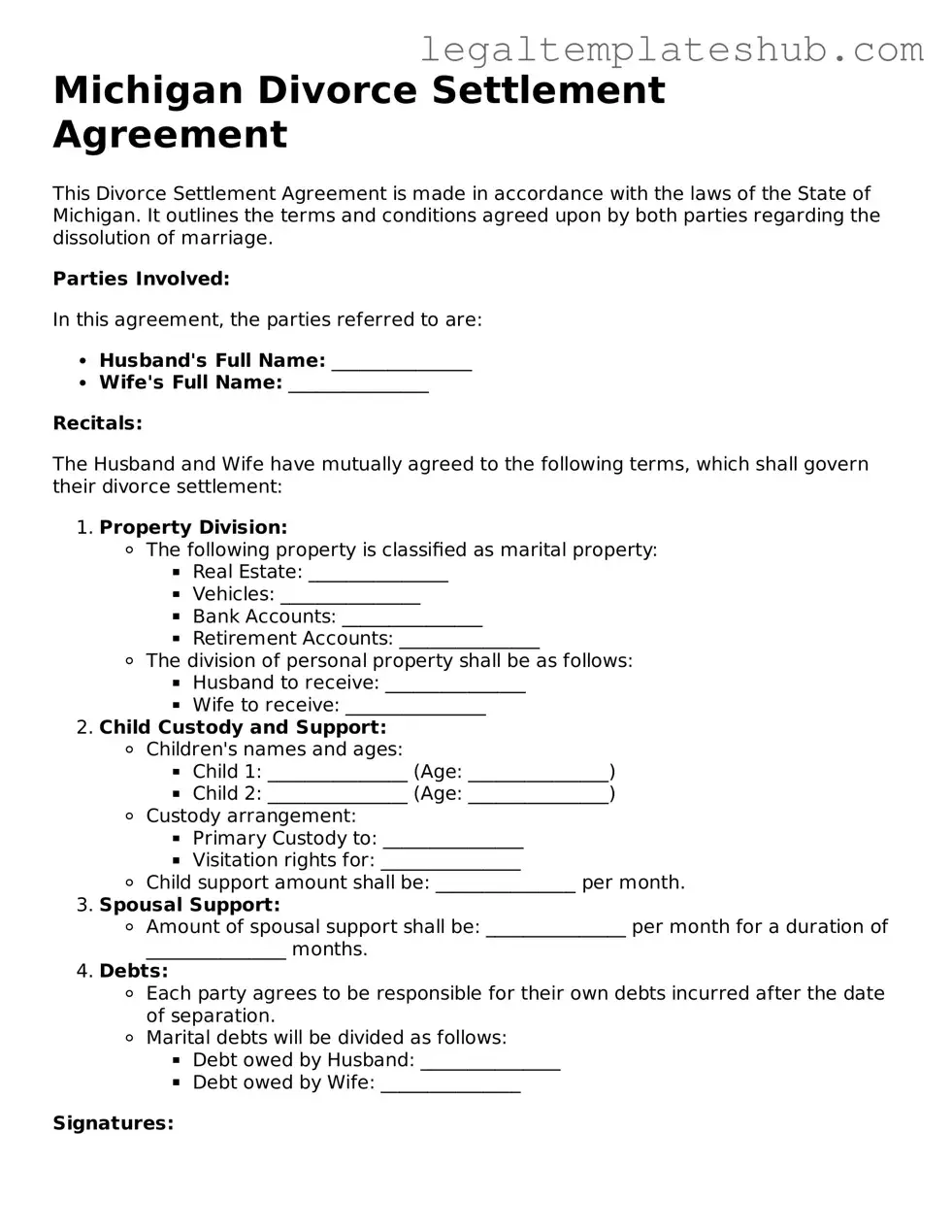Instructions on Filling in Michigan Divorce Settlement Agreement
Completing the Michigan Divorce Settlement Agreement form is an important step in the divorce process. This form outlines the terms agreed upon by both parties regarding various aspects of their separation. Once filled out, this document will be submitted to the court for approval, helping to finalize the divorce.
- Start by downloading the Michigan Divorce Settlement Agreement form from the Michigan Courts website or obtaining a hard copy from your local courthouse.
- Begin filling out the form with your personal information, including your full name, address, and contact details. Make sure to provide accurate information.
- Enter your spouse’s information in the designated section, ensuring you include their full name and address as well.
- In the next section, detail the date of your marriage and the date of separation. This information is crucial for the court’s records.
- Outline the terms of your agreement regarding property division. Specify what assets and debts will be divided and how. Be as clear and detailed as possible.
- Address any child custody arrangements if applicable. Include details about physical and legal custody, visitation schedules, and any other relevant information.
- Discuss child support terms. Clearly state the amount of support to be paid, the frequency of payments, and any other related financial obligations.
- Complete the section on spousal support, if applicable. Indicate whether support will be paid, the amount, and the duration of payments.
- Review the entire form for accuracy. Double-check names, dates, and figures to ensure everything is correct.
- Both parties must sign the form. Make sure to date the signatures as well.
- Make copies of the completed form for your records before submitting it to the court.
After submitting the form, the court will review it. If everything is in order, a judge will approve the settlement, leading to the finalization of the divorce. Keep an eye on any communication from the court regarding your case.
